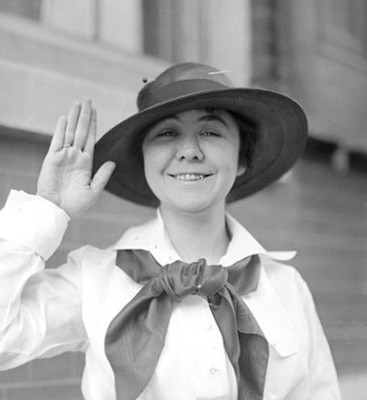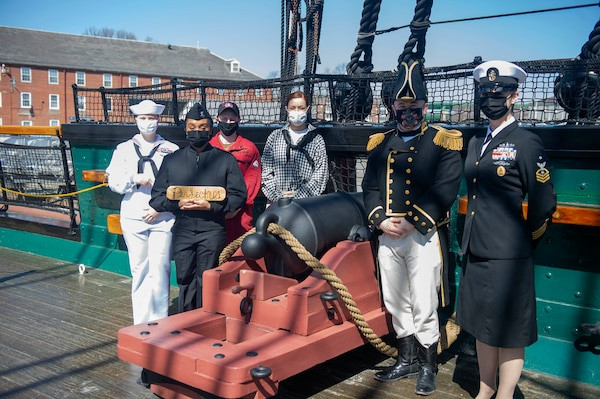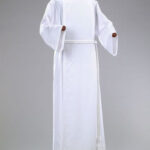On March 21, 1917, a significant moment in U.S. Naval history occurred when Loretta Perfectus Walsh was officially sworn in as a chief yeoman. This event marked her as the first female chief petty officer in the U.S. Navy. Just four days prior, Walsh had already broken barriers by becoming the first woman to enlist in the Navy, a distinction that also made her the first woman to serve in any branch of the U.S. armed forces outside of nursing roles.
 Loretta Perfectus Walsh, the first woman to enlist in the U.S. Navy, signing her enlistment papers in 1917, wearing what would become an early female navy officer uniform
Loretta Perfectus Walsh, the first woman to enlist in the U.S. Navy, signing her enlistment papers in 1917, wearing what would become an early female navy officer uniform
Before Walsh’s groundbreaking enlistment, women’s service in the Navy was primarily limited to civilian roles within the medical field, offering few of the benefits accorded to their male counterparts. However, the onset of World War I created an urgent need for personnel, leading to a shift in policy. During World War I, over 11,000 women, known as Yeoman (F) or “Yeomanettes,” joined the Navy. These women primarily filled clerical positions, performing essential administrative tasks that freed up men for sea duty. Importantly, they received equal pay to men, earning $28.75 per month, and were granted veteran status after the war, a recognition of their valuable service.
The Female Navy Officer Uniform at the time, while not explicitly detailed in historical records regarding Walsh’s initial enlistment, was a modified version of the chief petty officer’s uniform. This adaptation symbolized their new status and responsibilities within the naval structure. The decision to enlist women and grant them uniforms and ranks equivalent to men was partly a strategic move by Secretary of the Navy Josephus Daniels. Facing a shortage of male recruits as the U.S. prepared for war in Europe, Daniels authorized the enlistment of women into the U.S. Naval Reserve Force under the Naval Act of 1916.
To encourage male enlistment, Lieutenant Commander Frederick R. Payne was authorized to publicly swear in Walsh as a chief petty officer. This public ceremony, where Walsh donned her female navy officer uniform, was strategically covered by Philadelphia newspapers and subsequently gained national attention. Reporters highlighted the necessity of enlisting women due to insufficient male enlistment numbers. This strategy proved effective, leading to a significant increase in both male and female enlistments even before the official declaration of war.
Loretta Perfectus Walsh, born on April 22, 1896, in Olyphant, Pennsylvania, had a background that prepared her for her pioneering role. She attended St. Patrick’s Parochial & High Schools and Scranton & Lackawanna Business College, gaining skills that would be valuable in her naval service. Prior to enlisting, Walsh worked as a clerk for the Navy League in Philadelphia, further connecting her to naval affairs. She volunteered during the 1918 influenza epidemic while stationed at the Philadelphia Naval Home, demonstrating her commitment to service beyond her assigned duties. Sadly, Walsh contracted influenza in 1918 and later developed tuberculosis, leading to her premature death on August 16, 1925, at the age of 29.
 Modern female navy officers and sailors in their contemporary uniforms aboard the USS Constitution, highlighting the evolution from early female navy uniforms
Modern female navy officers and sailors in their contemporary uniforms aboard the USS Constitution, highlighting the evolution from early female navy uniforms
Despite her short life, Walsh’s legacy endured. In 1928, the National Yeoman F (NYF) society, composed of female Navy veterans from World War I, was formed to honor their service and advocate for recognition. The NYF campaigned to have Walsh reburied at Arlington National Cemetery and to erect a monument in her honor, though these efforts were ultimately unsuccessful. However, funds were raised by the NYF and other veterans’ groups, leading to the dedication of a monument at Walsh’s gravesite in 1937, ensuring her contribution would not be forgotten. More recently, in 2021, the USS Constitution honored Walsh by naming a long gun “Perfectus,” further cementing her place in naval history.
Loretta Perfectus Walsh’s story is not just a personal biography; it is a pivotal chapter in the history of female navy officer uniforms and the broader integration of women into the U.S. Navy. Her service paved the way for future generations of women in uniform, demonstrating their capability and commitment to naval service, and fundamentally changing the landscape of the U.S. armed forces.


